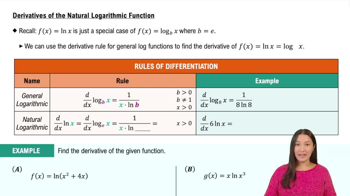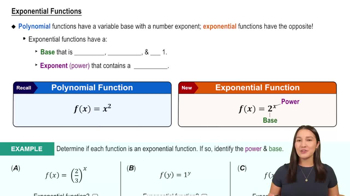Multiple Choice
Convert the following logarithmic expression to its equivalent exponential form.
 Verified step by step guidance
Verified step by step guidance Verified video answer for a similar problem:
Verified video answer for a similar problem:



 7:3m
7:3mMaster Logarithms Introduction with a bite sized video explanation from Patrick
Start learning